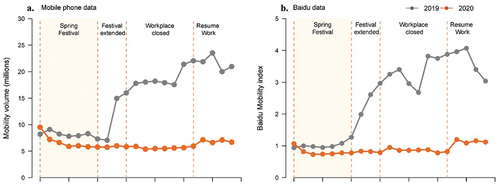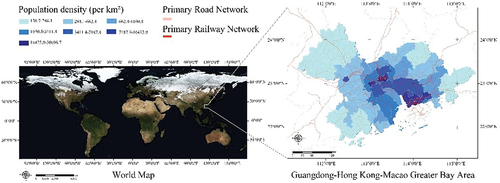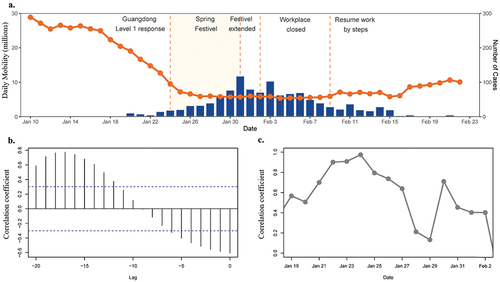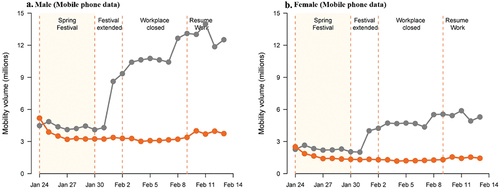Figures & data
Figure 3. The correlation between daily population mobility and daily incidence of COVID-19 with different time lags.

Figure 4. Mobility of 2020 and daily incidence of COVID-19 in nine cities of GBA (mobility volume of a specific city is calculated by the sum of intra-city travels, outflow travels between this city to other GBA cities, and inflow travels between other GBA cities to this city).

Table 1. Major mobility interventions in different pandemic stages in GBA.
Figure 5. Daily mobility of 2020 after Guangdong level 1 response compared with 2019 in nine cities of GBA.

Figure 6. Mobility changes in travel radius after Guangdong level 1 response in 2020 compared with mobility in 2019.








